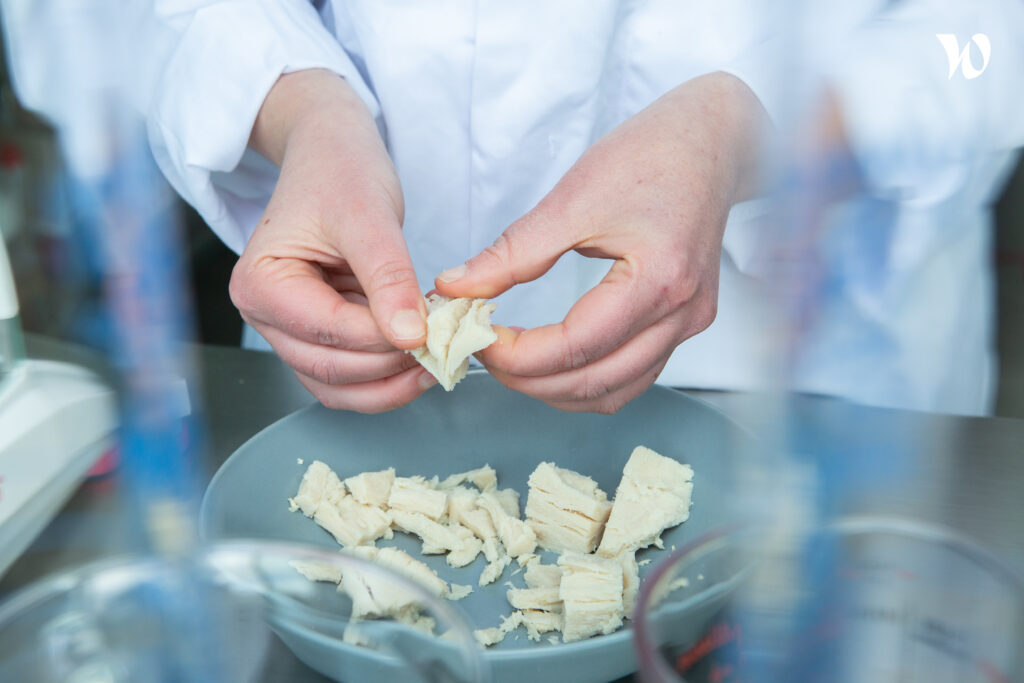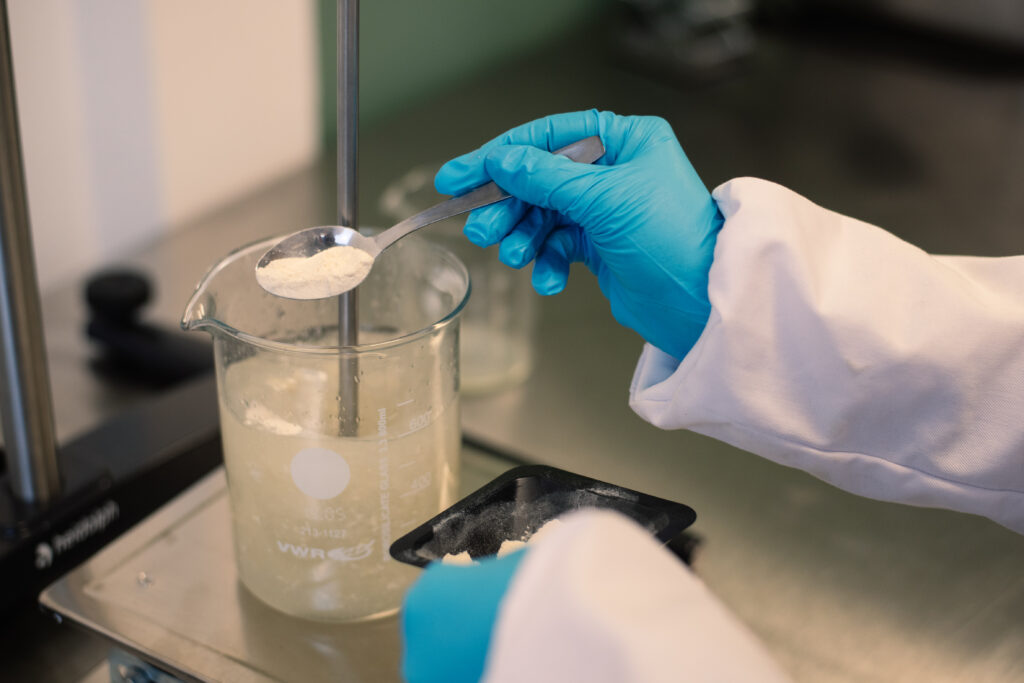Introduction
As the world looks for sustainable protein sources to address environmental concerns, plant-based meat appears to be a promising solution. Technologies like fermentation and wet and dry extrusion are widely used in the production of plant-based meat commonly sold around the world. As new technologies like 3D printing, lab-grown meat, and umisation emerge, one can wonder what is the difference between these technologies and what are their potential to satisfy consumer tastes and values. This article explores the difference between the long-used extrusion and the innovative umisation process.
Extrusion: Versatility in Production
Extrusion is a well-established method in the food industry, that plays a significant role in plant-based meat production. This process involves pushing plant-based mixtures through mechanical systems to achieve the desired texture and structure. Wet and dry extrusion are the two primary techniques employed.
Wet extrusion enables precise control over the production process parameters, ensuring the desired texture and functionality of plant-based meat. On the other hand, dry extrusion stands out for its cost-effectiveness and energy efficiency. Both methods offer advantages such as adaptability, low cost, energy efficiency, and high productivity.
However, extrusion methods also face certain challenges. On the consumer side, we count limitations in terms of texture, juiciness, and flavor alterations. These concerns limit the adoption of most plant-based meat as the consumer often finds the alternatives to be too dry, too crumbly, with a strong feeling of fibers or taste that is too far away from meat and closer to vegetable taste.
On a more scientific side, there are also challenges concerning changes in protein structure and formulation challenges. Despite these limitations, extrusion remains a practical and widely used option for producing plant-based meat on a larger scale.
Umisation: Pioneering Authenticity
In only 3 years of research and development, umisation technology has revolutionized the plant-based meat landscape with its ability to replicate the taste, texture, and appearance of real meat. Developed after extensive research, in both technology and consumer’s taste, umisation focuses on delivering a new sensory experience to its consumer by mimicking the complex muscle textures found in animal meat. Unlike other methods, umisation uses only 7 to 10 natural and easy-to-understand ingredients.
This technology allows the creation of thick and juicy plant-based fillets that can be cooked in a multitude of ways, satisfying consumer desires for cooking versatility. From grilled to fried in a pan or in the oven, umiami’s plant-based fillet is a real revolution for the senses thanks to the umisation.
A scalable technology:
Last but not least, Umisation is scalable to an industrial level.
We first started production with a pilot plant in Villebon-sur-Yvette and are now opening our first large industrial plant-based chicken fillet production facility in Duppigheim, France. The production plant is 14,000m2 with a production line of a capacity of 7,500 tonnes a year.
With its clean process, umisation addresses consumer preferences for taste, texture, appearance, and nutritional value, making it a comprehensive solution for the evolving landscape of plant-based fillets.


A Comparative Overview
Umisation stands out for its ability to create thick cuts of plant-based fillets with complex muscle textures that closely resemble animal meat. Extrusion methods also achieve texture, but umisation excels in replicating the intricate muscle fibers found in animal-based products. As an example, extrusion will be more suited for sausages, patties, and plant-based products that are an accompaniment to a dish. Umisation’s focus on minimal, high-quality ingredients aligns with the growing consumer demand for transparency and cleaner labels. In contrast, extrusion techniques may involve a broader range of ingredients (typically contains 20).
Conclusion: A Flavorful Future
As the plant-based meat industry evolves, umisation is at the forefront of innovation. While extrusion techniques offer versatility and proven scalability, umisation’s unparalleled focus on authenticity and minimal, high-quality ingredients positions it as a game-changer in the field. With both methods contributing to the diversification of plant-based meat options, consumers can look forward to a flavorful future where sustainability and taste coexist harmoniously.
Sources:
- Brian Plattner, Extrusion Techniques for Meat Analogues, Wenger Manufacturing, Sabetha, KS, U.S.A.